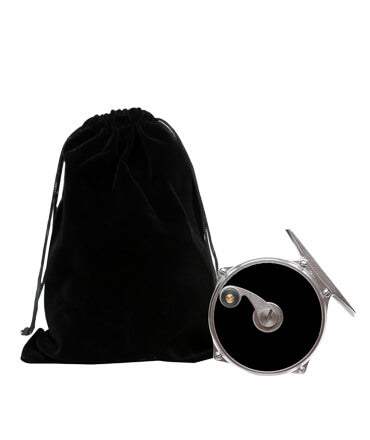Waders: Essential Guide to Choosing the Best for Hunting and Summer Use
Choosing the right waders can make or break your hunting experience. I believe the best waders for hunting offer the perfect balance of comfort, durability, and weather resistance. With so many options available, it's essential to understand the differences between wader styles and materials.

When considering wader boots versus stockingfoot waders, each has its distinct advantages. Wader boots provide more support and stability, while stockingfoot waders allow for a more customized fit with your choice of boots. I find that the choice ultimately depends on personal preference and the specific conditions I'll face while hunting.
For those hunting in warmer months, lightweight waders are a game changer. They offer breathability without sacrificing performance, allowing me to stay comfortable even in the heat. Selecting the right pair can enhance your overall hunting experience, ensuring you stay focused on the task at hand.
Understanding Waders
Waders are essential gear for hunting and fishing in various aquatic environments. Their design and material significantly affect comfort, durability, and performance.
Materials and Construction
Waders are typically made from materials like neoprene, Gore-Tex, or synthetic fabrics. Neoprene waders provide excellent insulation in cold water, making them ideal for winter use. They are thicker and offer good mobility but can be less breathable, which might lead to discomfort in warmer conditions.
Gore-Tex waders are recognized for their breathability and waterproof capabilities. This material helps regulate temperature and reduces moisture buildup inside. Several wader styles are available, such as chest waders for deeper water and hip waders for shallower environments. When choosing waders, the construction quality is vital. Look for reinforced seams and sturdy materials to enhance durability.
Waders for Different Environments
The choice of waders can depend on the hunting or fishing environment. If I'm in cold waters, neoprene is my material of choice due to its warmth. For warmer climates, breathable waders made from synthetic materials are suitable, allowing moisture to escape while keeping water out.
Shallow waters may require hip waders for easy movement, whereas chest waders are essential for deeper conditions. Consider features like adjustable straps for a more customized fit, which improves comfort during long hours of wear. Additionally, features such as reinforced knees enhance durability and can withstand rough terrain. Choosing the right wader pair can enhance the overall experience in the field.
Selection and Fit
Finding the right waders is crucial for comfort, mobility, and protection while hunting. Proper fit ensures that I remain agile and warm, especially when layering for colder conditions. It's essential to focus on size, comfort, and how the waders perform in various environments.
Choosing the Correct Size and Fit
When selecting waders, I pay close attention to sizing charts provided by manufacturers. These charts typically include measurements for chest, waist, inseam, and foot size. Accurate measurement is key, as I want to avoid both tightness and excessive looseness.
Considerations for Fit:
- Layering: I often wear thicker materials underneath, so I choose waders that allow for layering without restricting movement.
- Adjustability: Adjustable straps and belts help refine the fit, ensuring my waders stay in place during activity.
- Comfort: Cushioned boots or neoprene uppers enhance comfort. Always check for seams or areas that might cause chafing.
Before finalizing, I always try them on with intended layers and ensure full mobility. A snug yet comfortable fit enhances my wading experience.
Wader Types and Features
When selecting waders, understanding the various types and their specific features is essential. This knowledge ensures that you can make an informed choice based on your needs for hunting, fishing, or other outdoor activities.
Bootfoot vs Stockingfoot Waders
Bootfoot waders come with integrated boots, making them easy to put on and take off. They offer excellent insulation and are ideal for cold-water conditions. Their construction minimizes leaks since the footwear is part of the wader system, enhancing durability.
In contrast, stockingfoot waders require separate wading boots. This design allows for greater versatility and customization, letting me choose boots tailored to my activities. When selecting stockingfoot waders, I look for features like gravel guards to prevent debris from entering the wading boots, ensuring a comfortable experience.
Specialized Waders for Hunting and Fishing
I pay close attention to the specific features that enhance functionality for hunting and fishing. Hunting waders are often camouflaged and designed with extra pockets for gear storage. They might also incorporate insulation, making them suitable for colder environments.
Fishing waders tend to focus on breathability and lightweight materials, especially for warmer weather. They use a waterproof membrane to keep me dry while allowing moisture to escape. Knowing the intended use helps in selecting the right pair that balances comfort with performance.
Innovations in Wader Technology
Recent advancements in wader technology have improved comfort and durability significantly. Breathable materials allow for better airflow, reducing sweat buildup during hot summer days. Additionally, innovations like reinforced seams enhance water resistance and minimize leaks.
Many brands now provide waders with advanced waterproof coatings, extending their lifespan. I also look for features like adjustable straps for a snug fit and removable insulation layers for varying conditions. These innovations cater to the diverse needs of anglers and hunters alike, making my wader choice much more effective.
Maintenance and Care

Proper care extends the lifespan of my waders, ensuring they remain effective during hunting seasons. Regular maintenance can help prevent leaks and damage.
Cleaning:
After each use, I rinse my waders with fresh water to remove mud and debris. I avoid using harsh detergents that might damage the material.
Drying:
I air-dry my waders, hanging them upside down to prevent moisture buildup. This practice also helps maintain the integrity of the seams.
Storage:
I store my waders in a cool, dry place. Avoiding direct sunlight prevents material degradation, especially for neoprene options.
Inspections:
Regularly, I inspect my waders for any signs of wear or leaks. Checking the seams and fabric helps catch issues early.
Wading Belt Use:
I use a wading belt when wading deeper waters. This not only enhances safety but also provides an extra layer of protection against leaks.
Repair Kits:
Keeping a repair kit on hand is essential. It allows quick fixes for small punctures or damage, prolonging the waders' life.
Breathability Maintenance:
For breathable waders, I ensure vents and fabric are clean to maintain optimal airflow. This prevents overheating during warm trips.
With these steps, I ensure my waders remain durable and ready for any hunting adventure.











